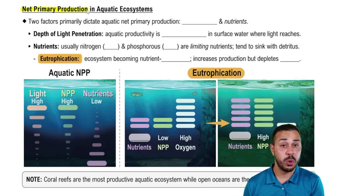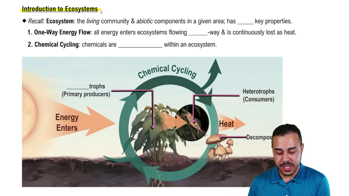Which of the following organisms is incorrectly paired with its trophic level?
a. Cyanobacterium—primary producer
b. Grasshopper—primary consumer
c. Zooplankton—primary producer
d. Fungus—detritivore

 Verified step by step guidance
Verified step by step guidance



Which of the following organisms is incorrectly paired with its trophic level?
a. Cyanobacterium—primary producer
b. Grasshopper—primary consumer
c. Zooplankton—primary producer
d. Fungus—detritivore
The discipline that applies ecological principles to returning degraded ecosystems to a more natural state is known as
a. Restoration ecology
b. Thermodynamics
c. Eutrophication
d. Biogeochemistry
Nitrifying bacteria participate in the nitrogen cycle mainly by
a. Converting nitrogen gas to ammonia
b. Releasing ammonium from organic compounds, thus returning it to the soil
c. Converting ammonium to nitrate, which plants absorb
d. Incorporating nitrogen into amino acids and organic compounds
Which of the following has the greatest effect on the rate of chemical cycling in an ecosystem?
a. The rate of decomposition in the ecosystem
b. The production efficiency of the ecosystem's consumers
c. The trophic efficiency of the ecosystem
d. The location of the nutrient reservoirs in the ecosystem